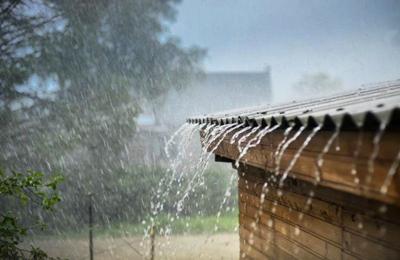
Rainwater collection could potentially alleviate many water supply issues by reducing the strain on current groundwater and surface water sources, according to the Upper Trinity Groundwater Conservation District.
COURTESY
Upper Trinity Groundwater Conservation District is encouraging people to harvest rainwater in an effort to conserve water.Rainwater harvesting is the collection and storage of rainwater for potable and non-potable indoor and outdoor use.
Rainwater harvesting is encouraged because rainwater is free and using it can reduce utility bills. Rainwater is soft, with an almost neutral ph, which can help to reduce corrosion or scale, according to the UTGCD.
Also, Texas offers financial incentives for rainwater harvesting systems. The process is legal and generally encouraged throughout the state, UTGCD Education and PR Coordinator Kaitlin Adams said.
Rainwater collected would need to be filtered for drinking water but can be used unfiltered for livestock, pets or lawn care, Adams said.
Research shows that rainwater harvesting dates back thousands of years, and for many people in Texas, it is still regularly used as a primary freshwater source, according to the UTGCD.
Especially regarding outdoor domestic use, rainwater collection could potentially alleviate many water supply issues by reducing the strain on current groundwater and surface water sources.
“In this area, in our district here, we deal with groundwater and water in the aquifers, and it’s not an infinite resource,” Adams said. “If you have a storage system to collect that rainwater, it can last all year, and it’s not something that we’re worried about running out of at this point. So, we feel it’s a very beneficial alternative to relying completely on groundwater.”
Rainwater harvesting systems can vary greatly in their complexity, from something as simple as a rain barrel strategically placed to catch runoff from a person’s roof to a complex system that provides potable water throughout your home. Rainwater can be collected through underground cisterns or above ground barrels placed underneath gutters, Adams said.
According to the National Weather Service, North Texas received 11.2 inches of rain in October, which is the most rain the area has seen in one month since 1981. On average, it is possible to collect approximately 0.62 gallons of water per square foot of roof area, per inch of rainfall.
Considering factors such as evaporation, leaks and splash out, about 75-85 percent efficiency can be expected from a typical system. That means, with an average yearly rainfall amount of 32 inches and 85 percent efficiency, a 2,000 square foot roof could expect to collect around 33,728 gallons of rainwater per year.
The amount of rain that can be collected varies based on the size of rain-catching barrels, Adams said.
Smaller containers, such as 50 gallons, are usually used more immediately whereas larger barrels can be stored and used a little at a time.
Barrels can be purchased from hardware stores for about $100 for a 50 gallon one, Adams said.
“It’s a good way to figure out the ins and outs of rainwater collection with a small barrel, figure out how much you need and how to hook it up if you want to create a more complicated system,” Adams said.
For more information about rainwater harvesting and other water saving ideas, visit the Upper Trinity GCD’s website, www.uppertrinitygcd.com.
Weatherford Democrat Reporter Madelyn Edwards contributed to this report.
